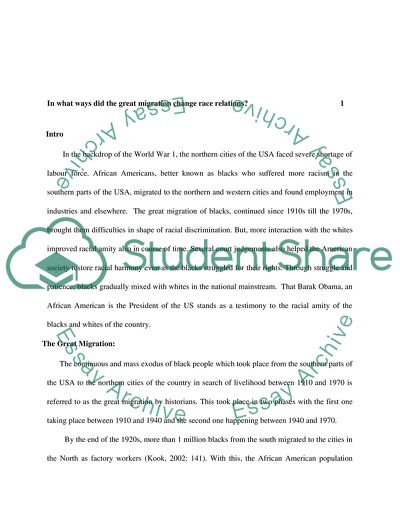Cite this document
(In What Ways Did the Great Migration from the South Change Race Term Paper, n.d.)
In What Ways Did the Great Migration from the South Change Race Term Paper. Retrieved from https://studentshare.org/history/1722620-in-what-ways-did-the-great-migration-from-the-south-change-race-relations-in-america
In What Ways Did the Great Migration from the South Change Race Term Paper. Retrieved from https://studentshare.org/history/1722620-in-what-ways-did-the-great-migration-from-the-south-change-race-relations-in-america
(In What Ways Did the Great Migration from the South Change Race Term Paper)
In What Ways Did the Great Migration from the South Change Race Term Paper. https://studentshare.org/history/1722620-in-what-ways-did-the-great-migration-from-the-south-change-race-relations-in-america.
In What Ways Did the Great Migration from the South Change Race Term Paper. https://studentshare.org/history/1722620-in-what-ways-did-the-great-migration-from-the-south-change-race-relations-in-america.
“In What Ways Did the Great Migration from the South Change Race Term Paper”. https://studentshare.org/history/1722620-in-what-ways-did-the-great-migration-from-the-south-change-race-relations-in-america.


